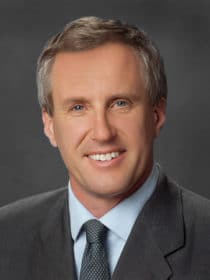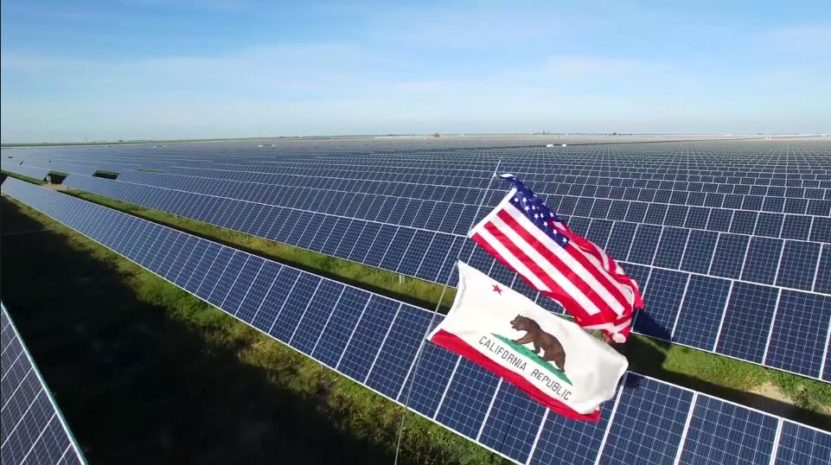California has long been a shining global example for a clean energy economy. The state continues to implement aggressive long-term policies that support both industry and strategic decarbonization efforts – and the impacts are boosting market advancements around the world. In a collaborative effort to drive international climate action, the California Energy Commission (CEC) office initiated the Under2 MOU with the German government. Today, the Under2 Coalition has grown into an alliance of more than 200 governments, representing 43% of the global economy. Former solar executive and California Energy Commission Chair David Hochschild spoke with pv magazine about California’s long-term relationship with Germany and the state’s blended focus on energy policy, technology and the economy to achieve 100% renewable energy.
pv magazine: California and Germany are taking a joint leadership role in the energy transition. Can you speak more about the history of the partnership and how the two governments are working together?

David Hochschild: It’s been one of the most important partnerships with regard to the growth of renewable energy that we have seen. Germany played a critical role in scaling up the solar industry at a time when it was really needed, building the foundation in the very early stages for the work that California has done. This was a continual process where California watched Germany bring the costs down and take solar to scale, and then that inspired greater action and policy in California. Today, we have one million solar rooftops in California with a very strong solar industry. Germany’s role in the development of the industry and the benefits it has brought to California have been significant. It has been a meaningful relationship, and we want to continue to challenge each other to do better. We had a meeting last week with some members of the German Parliament, and I shared with them what we are doing in California with our move toward a 100% clean electricity future – both the opportunities and challenges around achieving a zero-carbon economy by 2045. The folks in Germany involved in power-to-gas are coming out to California to support. We engage across all clean energy technologies and policy opportunities and will continue to learn from one another
The CA-Germany Bilateral Energy Conference is now going on its third year. In 2019, what are the goals of this collaboration?
As we move beyond fossil fuels in the electric grid one of the biggest challenges is flexibility and meeting the ramping down of solar in the afternoon. We are looking to storage, EV charging protocols, demand response, and all of the intelligent software and devices that we can employ to ensure continued reliability of the electric grid as we decarbonize. This is the central limitation challenge. There are many German technologies, and companies like Siemens and others, that are playing a role to meet this challenge. There is great opportunity for us to increase collaboration here, and within industries.
What type of advancements from Germany are supporting California?
One of the things that I am really heartened by in Germany is the movement of the big automakers toward electric vehicles. This is a much-needed step forward. Germany was the origin of the diesel engine, and the announcement earlier this year of the new direction that VW, Audi and others are headed is very positive. The more electric vehicles we have, the more useful opportunities to support the grid – to have charging protocols which support the grid.
The California Climate Strategy aims for a 50% reduction in petroleum use in vehicles. What role do electric vehicles and storage technologies play in this?
Electric vehicles are the future of transportation. There are roughly 140 new models planned for release into the market over the next three years. We are seeing incredible progress made on the range and diversity of the vehicles. For example, the Ford F150 truck, which is probably the most popular truck in the United States, is going electric starting next year. And VW is coming out with its new famous euro van, which will be electric. Long-range vehicles with more than a 200-mile range are coming out and being met with great enthusiasm.
Today, we are at 650,000 electric vehicles on the road in California. We are adding about 20,000 a month, and we are doing a lot to encourage that – with an incentive payment, carpool stickers, and other encouragements – plus a federal tax credit. Currently, it’s about half the cost per mile to drive an electric vehicle in the U.S. when compared to an internal combustion engine car. We are doing a lot in the state to promote all of this. Looking ahead, it is important to look at the big trends with storage. Battery pricing, which is about half the cost of an electric vehicle, is coming down. At the same time, energy density is increasing. In a few years we will increase to the 300-mile range, and then eventually a 400-mile range, with the same battery form factor of today. This is a great reason for optimism, and we are aggressively building out EV charging infrastructure all over the state.
California has been a leading global example of growing a cleantech sector while stimulating its economy. How can other states and governments best support a thriving clean energy industry through policy?
The single most important thing that can be done is to provide stable, long-term policies. It is crucial to get away from the short-term, stop-start approach, which doesn’t create the certainty that industries need to scale up.
If you look at programs that were successful in scaling – the solar industry, for example, our largest renewable energy industry was built in California by a 10-year, $3 billion incentive program. It had certainty, and a very well-designed feature where incentives dropped each year gradually down to zero, in an orderly and transparent way. It was not interrupted by policy changes or revisiting budgets, as it was already locked in. That was incredibly successful, and this is why we have almost 20 GW of installed solar around the state.
Germany, with its feed-in tariff – while a different policy design – is similar in the sense that it was long term with a fair amount of certainty. If there is one lesson, it is to create a stable, long-term policy environment. When you do that right, you can move mountains. It doesn’t have to be a permanent policy – you can put it in place for a period of time to bring costs down – and then it becomes competitive on its own. This is what we have seen with solar and wind, and now we need to do the same thing for electric vehicles and other new technologies.
With the recent ambitious goal set to achieve 100% renewables by 2045, what role will energy storage play in this transition?
Storage will play a very important role. We have a state target to get to 1.3 GW of energy storage by 2020. We see the storage industry as the new emerging clean energy sector, which will continue to come down in costs. Storage costs have declined 40% since 2015 – and closer to 90% in cost reductions since 2010. It’s on a good path and I think it can come down a lot more. Storage is one of many solutions, but it is not the only solution for flexibility. We do a lot to manipulate electric demand as well. We believe in storage and have developed incentives and targets to help encourage its growth.
California invests heavily in R&D. What is the level of investment it is making in storage technologies, and are there particular allocations to certain types of storage?
We invest about $150 million per year in research and development funding for the smart energy sector. We created an $800 million incentive program to encourage storage last year, the Self Generation Incentive Program, and put tens of millions into R&D. We have funded almost 40 energy storage demonstration projects around the state, which includes virtually every top chemistry that’s available – from vanadium to ironchromium and flow batteries to lithium-ion. We believe in a portfolio approach to provide each technology the opportunity to show its value, understanding that not every one of these technologies is going to prevail.
Interview conducted by Erica Johnson of pv magazine.
This content is protected by copyright and may not be reused. If you want to cooperate with us and would like to reuse some of our content, please contact: editors@pv-magazine.com.









By submitting this form you agree to pv magazine using your data for the purposes of publishing your comment.
Your personal data will only be disclosed or otherwise transmitted to third parties for the purposes of spam filtering or if this is necessary for technical maintenance of the website. Any other transfer to third parties will not take place unless this is justified on the basis of applicable data protection regulations or if pv magazine is legally obliged to do so.
You may revoke this consent at any time with effect for the future, in which case your personal data will be deleted immediately. Otherwise, your data will be deleted if pv magazine has processed your request or the purpose of data storage is fulfilled.
Further information on data privacy can be found in our Data Protection Policy.